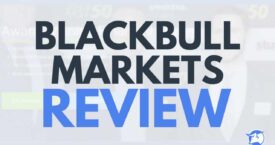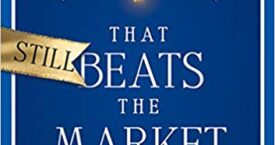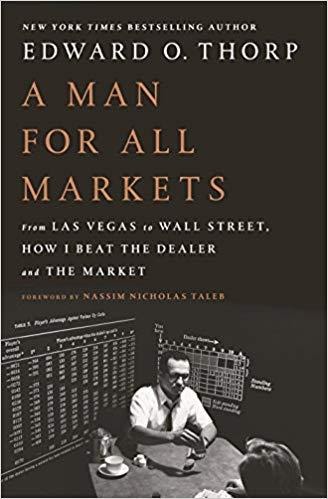Covered Call Definition
Contents:

If an investor is either neutral, mildly bullish or mildly bearish on a stock they own, that investor could sell an out-of-the-money call option on that stock to generate income. The maximum loss on a covered call resides on the stock side, and is calculated by stock purchase price – option premium collected. Covered call is an option strategy in which the option writer writes a call option on an asset he already owns. It is called a covered call because the potential obligation under the call option is covered by ownership in the underlying stock. A covered call is effective in a rising market since stocks often increase in value over time.

- In addition, if the underlying stock is called from you, it may create a further tax liability if you had a capital gain on the stock.
- I wrote this article myself, and it expresses my own opinions.
- When compared to stocks, options are leveraged at a ratio of 100 shares per 1 option contract.
- Covered means we first buy the stock before we sell the option.
Learn how to measure volatility using the Cboe VIX, rule of 16, and skew in your options trading. Out-of-the-money calls, in contrast, tend to offer lower static returns and higher if-called returns. At-the-money calls tend to offer higher static returns and lower if-called returns. The opportunity risk of not participating in a large stock price rise. Here’s how a covered call works, the pros and cons and when to use this option strategy.
If the option buyer doesn’t exercise the call option, and it expires, you can continue selling covered calls against the same shares, receiving additional premium payments. When you are buying stocks, the stock alone is bullish, because your stock profits if the price goes up. When you are selling call options, the selling of call option alone is bearish, because when the underlying stock price goes down you will make a profit from the premium collected. A covered call consists of both buying stocks and selling call options, so I would say it’s neither bullish nor bearish. In a nutshell, call options are speculative investments that profit when a stock rises substantially in value. Covered calls, on the other hand, are a combination of 100 shares of long stock and a short call.
IG International Limited is licensed to conduct investment business and digital asset business by the Bermuda Monetary Authority. This easy-to-understand e-book, without typical financial mumbo-jumbo, teaches you in less than 30mins the real reasons why you should trade options. It’s where I share all my best stuff, educational articles, market insights, ideas and everything else that matters for happy trading. Avoiding pain and pursuing comfort is the healthy, innate, human response to situations.
A covered call example
Selling a call against stock does, however, limit upside potential. If the stock rallies beyond the strike price + value of premium collected, the short call will act as ballast on the long stock, preventing further gains. One well-known strategy is the covered call, in which a trader buys a stock (or holds a previously-purchased long stock position), and sells a call.
I wrote this article myself, and it expresses my own opinions. I have no business relationship with any company whose stock is mentioned in this article. Commissions, taxes and transaction costs are not included in this discussion, but can affect final outcome and should be considered.
What is a Covered Call? Learn the Pros and Cons
In this case, the option buy will exercise the option, and buy it for $50. Thereby generating a profit if the price of the stock is above $50. We’re going to decide on the price that we’re willing to sell it and the date that we’re willing to sell it. In this hypothetical example, we agree to sell at $50 at any time over the next 1 month.

When a https://forexarena.net/ call option position is exercised, the stock position is closed as shares are taken away at the strike price call option was sold and funds are deposited into the trading account by the broker. The situation that benefits your position the most is when the underlying stock prices are going sideways. What you definitely don’t want to see is when the underlying stock turns bearish and keeps going down, because it would mean your stock holdings are at risk. When the underlying stock is turning bullish, you could be happy with the situation if you are happy to sell your shares at the strike price while collecting some premium. There is opportunity risk in case stock price spikes and continues to rise as option writer can’t profit from this rally since on the upside, profit potential is capped by option strike sold.
Writing a Covered Call
On the other hand, your shares are losing money as the price is traded below your average price. Another way of think of this premium from this strategy is that over a period of time covered call reduces cost basis of shares and one may even extend this to overall portfolio to enhance returns. Unlike our long call option strategy, the covered call must include a short call and100 shares of long stock. So we will assume we have 100 long shares of AAPL in our account today. Covered calls (aka “buy-writes”) and long calls are very different types of options trading strategies.
What Is A Covered Call? – Bankrate.com
What Is A Covered Call?.
Posted: Fri, 17 Feb 2023 08:00:00 GMT [source]
Investopedia requires writers to use primary sources to support their work. These include white papers, government data, original reporting, and interviews with industry experts. We also reference original research from other reputable publishers where appropriate.
Is There a Risk If I Sell the Underlying Stock Before the Covered Call Expires?
Considering the highly sophisticated nature of the https://trading-market.org/s market, it is critical for investors to be educated on all aspects of the trade. It is imperative to consider the tradeoffs involved in the buying and selling of option derivatives. As the chart shows, you’re capping your short-term upside potential, in exchange for extra income and a small amount of downside protection. This option earned you $0.85/share in premiums for the same period, which is far more than the dividend and is in addition to the dividend.

Our experts have been helping you master your money for over four decades. We continually strive to provide consumers with the expert advice and tools needed to succeed throughout life’s financial journey. Bankrate’s editorial team writes on behalf of YOU – the reader. Our goal is to give you the best advice to help you make smart personal finance decisions. We follow strict guidelines to ensure that our editorial content is not influenced by advertisers. Our editorial team receives no direct compensation from advertisers, and our content is thoroughly fact-checked to ensure accuracy.
Over the course of a year, selling a similar option three times would give you $2.55/share in premiums, which is twice the amount of the $1.25 annual dividend total. Consider that the annual dividends paid by this company are currently $1.25/share, or about $0.3125 per share per quarter. During this 4-month option lifespan, you likely received one dividend, or possibly two, for a total of $0.3125 to $0.625 in dividends. Covered call strategies are sometimes called Buy/Write strategies. In this case, the investor will buy the stock and sell a covered call in a single transaction. Options investors may lose the entire amount of their investment in a relatively short period of time.
Unlock Your Education
A covered call is a two-part strategy in which stock is purchased or owned and calls are sold on a share-for-share basis. A covered call is a relatively low-risk way to trade options since you protect the short call with your stock position. In such a scenario, the buyer will not exercise the call option because it is out-of-money .
In this case, by using the buy-write strategy they have successfully outperformed the stock. They still own the stock but have an extra $75 in their pocket less fees. Let’s say an investor owns shares of a hypothetical company called TSJ. With over 50+ years of combined trading experience, Trading Strategy Guides offers trading guides and resources to educate traders in all walks of life and motivations.
So, if we’re going to https://forexaggregator.com/ 1 contract of call option, we must first own 100 shares of that stock. Call is the definition of the type of option that we’re selling. We’re selling the right, but not the obligation for, the option buyer to purchase our shares from us. Covered means we first buy the stock before we sell the option. Throughout this guide, we’re going to outline why it’s important to own the stock before selling call options. Options are derivative contracts that derive their value from underlying assets.
Schwab clients should visit the StreetSmart Edge® trading platform for detailed information on adjusted options and their new terms; please review it carefully before you trade them. Use this educational tool to help you learn about a variety of options strategies. If the call expires worthless and you retain your shares, you can set up the covered call again and again. Even if your shares are called from you, you can repurchase the stock and set up a covered call again. Of course, if the stock fell a lot, you could repurchase the call option for less than you paid and then sell the stock position, if you prefer.

If the price remains below $55 at option expiration the seller will keep the 100 shares of stock and the $300 he received for the option. An option strategy of writing a call against a long stock position. Covered call writing allows investors to increase the return on their portfolios and also provides a partial hedge against their stock’s price falling. Determining the effective selling price is a simple calculation, and every covered call writer should calculate the effective selling price before entering a covered call position.




